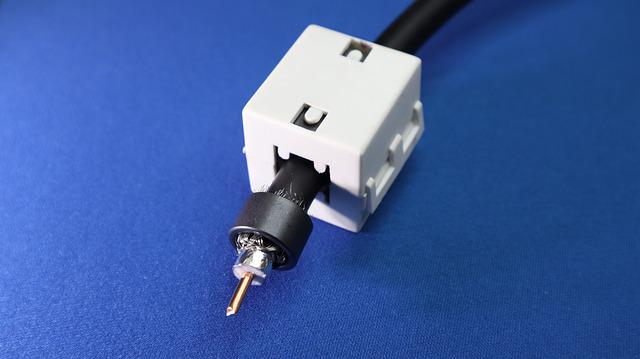
Coaxial cables are used extensively in telecommunications applications. Originating in the mid-1800s, they support high-frequency electrical signals. Coaxial cables are used for radio feedlines, local area networks (LANs), stereo systems, cable television and more. Coaxial cables, of course, require the use of special connectors. While there are different types of coaxial connectors, most of them feature the following parts.
The Body
All coaxial connectors have a body. The boxy is the outer shell. It’s usually made of a hard metal — either with or without plastic.
There are male coaxial connectors, and there are female connectors, both of which have a body. Male coaxial connectors have a body with interior threading. Female coaxial connectors, conversely, have a body with exterior threading. With opposite types of threading, male coaxial connectors and female coaxial connectors can be twisted together.
The Ferrule
Within the body is a ferrule. Coaxial connectors feature a body, followed by a ferrule within the body. The ferrule helps to shield the conductor so that it’s better protected against damage.
Ferrules are metal sleeves. They are oftentimes used by themselves to secure the ends of stripped wire. Connectors, though, may contain a ferrule as well. Both male and female coaxial connectors contain a ferrule. It’s found inside of their respective body.
The Pin or Receptacle
Coaxial connectors have either a pin or receptacle. It’s the innermost part of a coaxial connector. The pin or receptacle is found inside of a coaxial connector’s ferrule.
Male coaxial connectors have a pin, whereas female coaxial connectors have a receptacle. They are both conductors, and they will join with the conductors of the coaxial cables with which they are used.
Coaxial cables feature an inner conductor. It’s typically made of either solid copper or copper-plated steel wire. The conductor provides the medium through which electrical signals can travel. As the electrical signals reach a pair of coaxial connectors, they will travel through the pin and the pin and receptacle. Pins and receptacles are made of similar electrically conductive materials, so electrical signals can travel through them.
In Conclusion
There are different types of coaxial connectors, but most of them feature a similar design consisting of the same parts. They have an outer body, followed by a sleeve-like ferrule. And in the center of a coaxial connector is a pin or receptacle. With these parts, coaxial connectors are able to transmit and receive high-frequently electrical signals.

